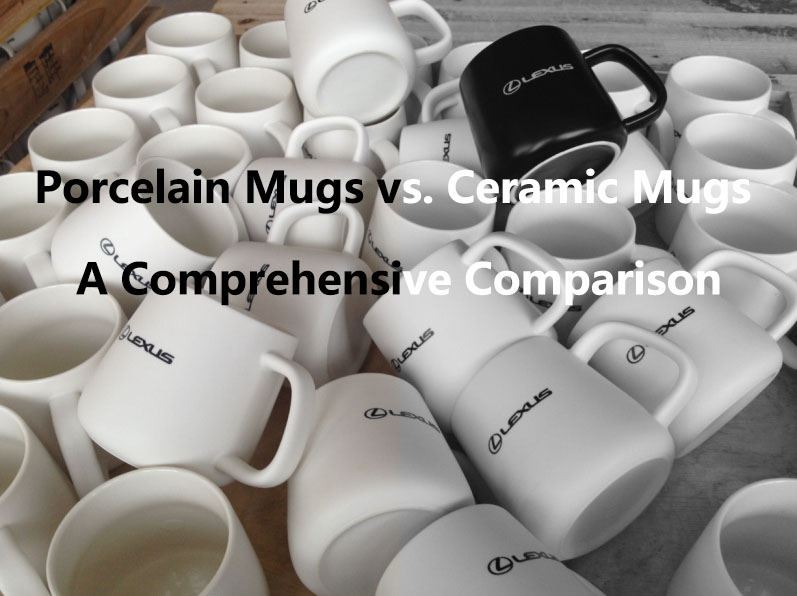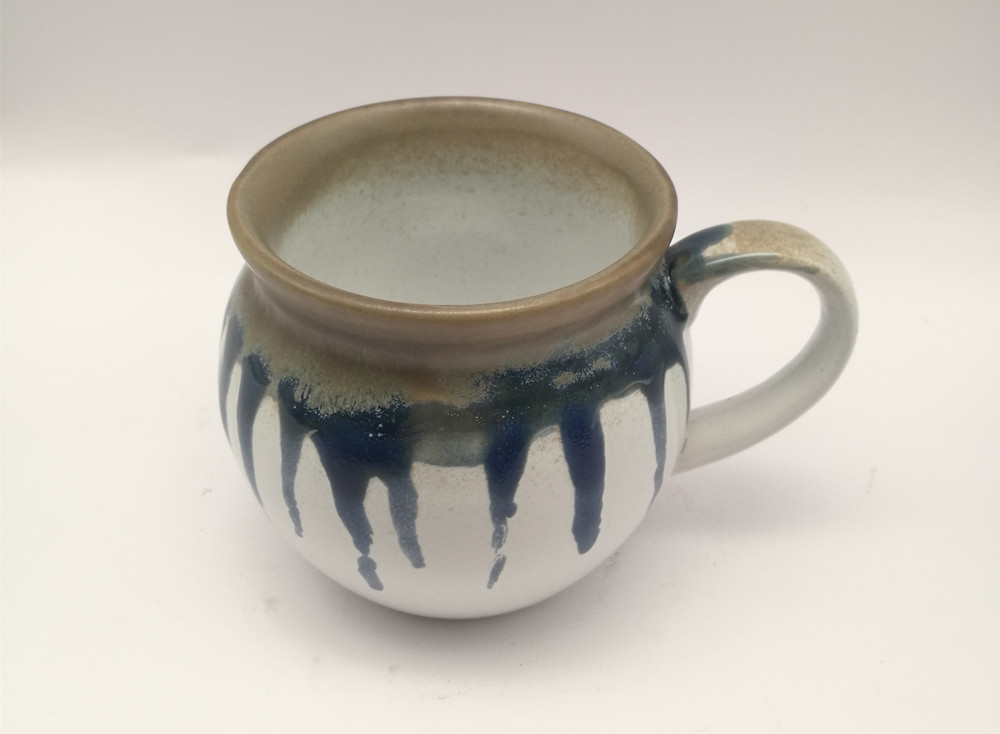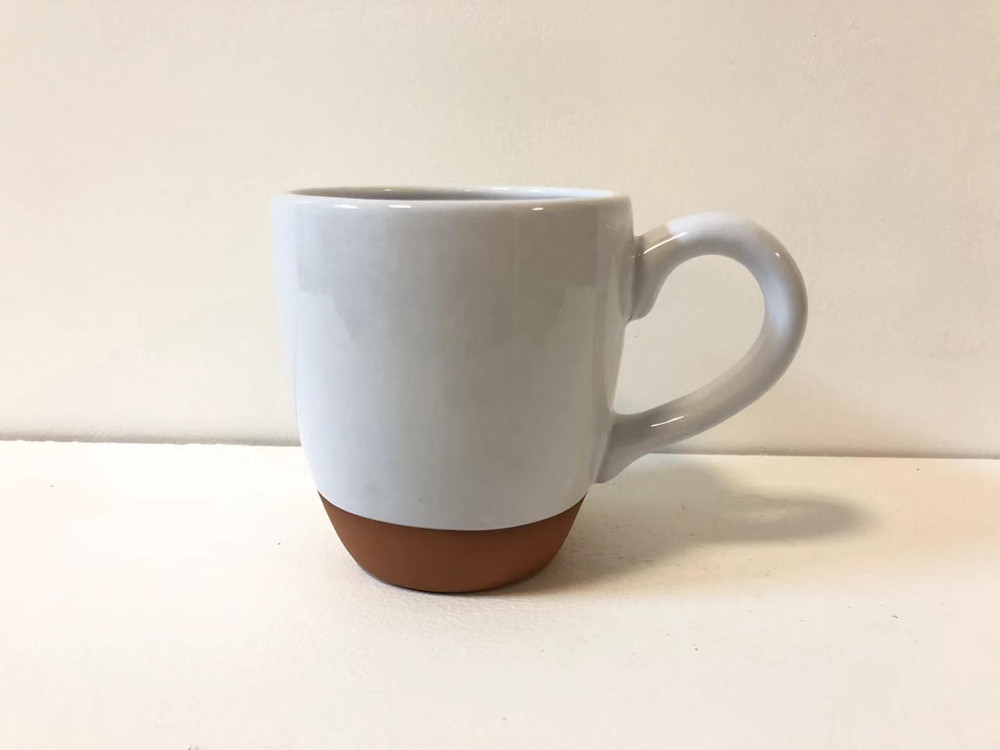Tazze in porcellana vs. tazze in ceramica: un confronto completo
Ora di emissione: 2024-02-05 16:12:50
Quando si tratta di scegliere la tazza perfetta per il caffè o il tè del mattino, il dibattito tra tazze in porcellana e tazze in ceramica è in corso da tempo. Ogni materiale ha le sue caratteristiche uniche, vantaggi e svantaggi che soddisfano preferenze ed esigenze diverse. In questa guida completa, esploreremo le differenze tra tazze in porcellana e tazze in ceramica, aiutandovi a prendere una decisione consapevole su quale sia la più adatta alla vostra dose quotidiana di caffeina.
Introduzione
Le tazze sono parte integrante della nostra vita quotidiana. Sono il contenitore delle nostre bevande preferite e spesso hanno un valore sentimentale. Che siate appassionati di caffè, amanti del tè o semplicemente bisognosi di un contenitore affidabile per la vostra dose quotidiana di idratazione, la scelta tra tazze in porcellana e in ceramica può avere un impatto significativo sulla vostra esperienza di consumo.
In questo articolo approfondiremo la composizione, l'aspetto, la durevolezza e gli usi pratici delle tazze in porcellana e in ceramica per aiutarti a comprendere le differenze tra le due e a prendere una decisione consapevole quando sceglierai la tua prossima tazza.
Tazze di porcellana

Composizione
La composizione esatta della porcellana varia a seconda dell'uso e del produttore, sebbene un ingrediente comune sia il caolino, un'argilla bianca e morbida combinata con altri ingredienti come cenere d'ossa, sabbia, magnesio, quarzo e feldspato. Secondo i report di How Stuff Works , la miscela viene poi modellata e cotta ad alta temperatura per indurirsi. Se questo vi sembra simile a come viene realizzata la ceramica, avete ragione. La porcellana è tecnicamente un sottoinsieme specializzato della ceramica: entrambe sono fatte di argilla e cotte in forno, ma la porcellana utilizza materie prime e smalti diversi, ha una densità maggiore e viene cotta a una temperatura più elevata, circa 1100 °C. Questo rende la porcellana più durevole e più resistente all'acqua rispetto alla ceramica, osserva l'UNESCO (e i secondi di Home Depot !).
Le tazze in porcellana sono realizzate con un tipo specifico di argilla ceramica chiamata caolino, insieme ad altri materiali come feldspato e quarzo. La combinazione di questi ingredienti crea un materiale fine, delicato e traslucido. La porcellana viene cotta a temperature estremamente elevate, ottenendo una superficie non porosa, simile al vetro, liscia ed elegante.
Aspetto
Le tazze in porcellana sono rinomate per il loro aspetto raffinato. In genere presentano una finitura bianca pura, lucida e liscia al tatto. Questa traslucenza permette alla luce di filtrare, conferendo alle tazze in porcellana un senso di raffinatezza e lusso difficilmente eguagliabile.
Durata
While porcelain mugs may appear fragile due to their delicate appearance, they are surprisingly durable. Their dense and non-porous structure makes them highly resistant to chipping, staining, and absorbing odors. They can also withstand high temperatures, making them safe for the microwave and dishwasher.
Practical Uses
Porcelain mugs are the preferred choice for formal occasions, special events, and upscale dining establishments. They are perfect for serving high-quality teas, gourmet coffees, and hot chocolate. The elegant appearance of porcelain mugs enhances the overall drinking experience and adds a touch of sophistication to any table setting.
Ceramic Mugs
Composition
According to Wiki, A ceramic is any of the various hard, brittle, heat-resistant, and corrosion-resistant materials made by shaping and then firing an inorganic, nonmetallic material, such as clay, at a high temperature. Common examples are earthenware, porcelain, and stoneware.
Here we exclude porcelain mugs and focus on stoneware mugs and earthenware mugs:
Stoneware Mugs

Composition
According to Britannica, Stoneware, pottery that has been fired at a high temperature (about 1,200° C [2,200° F]) until vitrified (that is, glasslike and impervious to liquid). Although usually opaque, some stoneware is so thinly potted that it is somewhat translucent. Because stoneware is nonporous, it does not require a glaze; when a glaze is used, it serves a purely decorative function. There are three main kinds of glaze: lead glaze, salt glaze, and feldspathic glaze (the same material used in the body and glaze of porcelain).
Appearance
Stoneware mugs are celebrated for their rustic and earthy appearance. They often feature natural, muted colors and a matte finish that complements their handmade feel. The surface of stoneware mugs can vary, with some showcasing textured or glazed exteriors that add character to each piece.
Durability
One of the standout features of stoneware mugs is their durability. They are exceptionally resistant to chipping, cracking, and absorbing odors or stains. Stoneware mugs can safely handle both hot and cold beverages and are suitable for use in the microwave, oven, and dishwasher.
Practical Uses
Stoneware mugs are versatile and ideal for everyday use. They are well-suited for sipping your morning coffee, enjoying an afternoon tea, or indulging in a cozy mug of hot cocoa. Their rustic charm adds warmth to any setting, making them a favorite for casual and comfortable drinking experiences.
Earthenware Mugs

Composition
According to Nomliving, Earthenware is clay fired at relatively low temperatures of between 1,000 to 1,150 degrees. This results in a hardened but brittle material which is slightly porous (small holes through which liquid or air can go through), therefore can not be used to contain water. So earthenware mugs are glazed.
Appearance
Earthenware mugs often showcase vibrant and colorful designs. Their surface can be glossy or matte, depending on the glaze applied. The porous nature of earthenware clay allows it to absorb glazes and display intricate patterns and artwork. These mugs tend to exude a cozy and welcoming ambiance.
Durability
While earthenware mugs possess a certain charm, they are more delicate and prone to chipping and cracking compared to stoneware. Their porous structure makes them susceptible to staining and absorbing odors if not properly cared for. Earthenware mugs are generally not recommended for use in the microwave or dishwasher.
Practical Uses
Earthenware mugs are best suited for casual occasions and relaxed settings. They are perfect for serving herbal teas, cappuccinos, or artisanal lattes. The colorful and decorative nature of earthenware mugs makes them a delightful choice for adding a touch of whimsy to your drinkware collection.
Key Differences
Now that we've explored the individual characteristics of porcelain and ceramic mugs, let's highlight the key differences between the two:
1. Composition
Porcelain mugs are made from kaolin clay and fired at high temperatures, resulting in a dense, non-porous material.
Ceramic mugs are made from various types of clay and fired at lower temperatures, resulting in a more porous material.
2. Appearance
Porcelain mugs have a smooth, glossy, and pure white finish, with an elegant and refined appearance.
Ceramic mugs offer a wide range of designs, colors, and finishes, catering to a more personalized and casual aesthetic.
3. Durability
Porcelain mugs are highly durable and resistant to chipping, staining, and odors.
Ceramic mugs are durable but more susceptible to chipping, staining, and absorbing odors if not properly cared for.
4. Practical Uses
Porcelain mugs are best suited for formal occasions, fine dining, and serving high-quality beverages.
Ceramic mugs are versatile and suitable for everyday use, casual gatherings, and personalization.
Making the Right Choice
Choosing between porcelain and ceramic mugs ultimately depends on your preferences, lifestyle, and intended use. Here are some factors to consider when making your decision:
Occasion: Think about when and where you'll be using the mugs most. If it's for special occasions and formal events, porcelain mugs are an excellent choice. For everyday use and casual gatherings, ceramic mugs offer more versatility.
Aesthetic Preferences: Consider your personal style and the overall theme of your kitchen or dining area. If you value elegance and refinement, porcelain mugs may be more appealing. If you prefer a more eclectic and personalized look, ceramic mugs are a great option.
Durata: valuta il tuo livello di cura e manutenzione. Se sei disposto a maneggiare le tue tazze con cura e a seguire le corrette linee guida per la manutenzione, sia le tazze in porcellana che quelle in ceramica possono essere adatte. Tuttavia, se cerchi un'opzione più robusta, la porcellana potrebbe essere la scelta migliore.
Budget: le tazze in porcellana sono generalmente più costose a causa della loro qualità premium e del loro aspetto elegante. Le tazze in ceramica, invece, offrono una gamma di prezzi più ampia, adattandosi a diverse tasche.
Conclusione
Nel dibattito tra tazze in porcellana e tazze in ceramica, non esiste un vincitore definitivo; tutto dipende dalle preferenze individuali e dal proprio stile di vita. Le tazze in porcellana offrono eleganza, resistenza e un aspetto raffinato, rendendole perfette per occasioni speciali.
POST RECENTI
- Dovresti conservare l'olio d'oliva in frigorifero? La verità che devi sapere!
2025-04-18
- Qual è la dimensione standard del piatto da insalata? Trova la soluzione migliore
2025-04-18
- I migliori tipi di vasi spagnoli che raccontano una bella storia
2025-03-31
- Le 5 migliori scatole portagioielli che amerai esporre
2025-03-31
- Come riparare una tazza in ceramica? Dai una seconda vita alla tua tazza.
2025-03-11
- Le tazze in ceramica sono lavabili in lavastoviglie? Sfatiamo alcuni miti
2025-03-11
- I 12 migliori oli profumati per bruciatori di oli [2025]
2025-02-06
- Scatole per gioielli all'ingrosso: stili, materiali e opzioni personalizzate
2025-02-06
Hai bisogno di un preventivo?Hai domande?
Ricevi una risposta da un esperto entro 24 ore
PARLA CON UNO SPECIALISTA >








